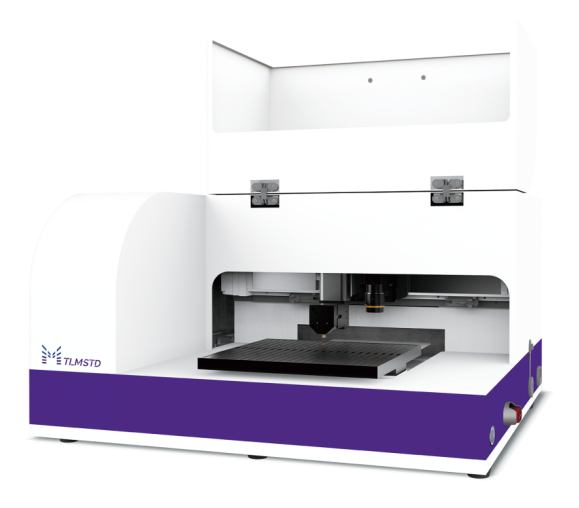
量子效率测试仪
PL/EL一体机
Sinton硅片少子寿命测试仪
Sinton硅块少子寿命测试仪
绒面反射率测试仪
3D共聚焦显微镜
清洗制绒工作站
在线四探针方阻测试仪
全自动扫描四探针方阻测试仪
在线薄膜厚度测试仪
晶化率测试仪
Horiba显微共焦拉曼光谱仪
傅里叶红外光谱仪
霍尔效应测试仪
分光光度计
全光谱椭偏仪
Horiba椭圆偏振光谱仪
TLM接触电阻率测试仪
超景深显微镜
网版智能影像测量仪
全自动影像测量仪
卧式拉力机
电池片稳态光衰老化试验箱
电池片紫外老化试验箱
电池片拉脱力综合测试仪
外观检验台
湿漏电测试系统
组件实验室EL测试仪
紫外老化试验箱
稳态光衰老化试验箱
电流连续性监测系统
PID测试系统
旁路二极管测试系统
LeTID测试系统
反向电流过载系统
脉冲电压测试系统
绝缘耐压测试仪
接地连续性测试仪
绝缘耐压接地测试仪
湿热环境试验箱
湿冻环境试验箱
热循环试验箱
动态机械载荷测试机
静态机械载荷测试机
冰雹冲击试验机
引出端强度试验机
霰弹冲击试验机
抗划伤(切割)测试机
剥离试验机
万能材料试验机(单臂)
万能材料试验机(双臂)
光伏玻璃透过率测试仪
醋酸测试试验箱
交联度测试系统
二极管接线盒综合测试仪
落球冲击试验机
半自动四探针
全自动探针式台阶仪
多通道太阳能MPPT系统
Horiba稳瞬态荧光光谱仪
钙钛矿P1激光划线测试仪
钙钛矿在线膜厚测试仪
钙钛矿工艺检测工作站
手持式IV测试仪
便携式EL测试仪
手持热成像测试仪
户外组件IV测试仪
户外组件多通道测试系统
光伏逆变器电能质量测试仪
无人机EL检测仪
光伏太阳能电池性能评估的利器:美能TLM接触电阻测试仪
日期:2024-05-24浏览量:10
接触电阻率测试功能主要用于测试接触电阻、薄层电阻、接触电阻率等,这些测试对于确保光伏太阳能电池的可靠性和性能至关重要。接触电阻率是衡量两个导体之间接触质量的一个重要参数,它直接影响到电流的传输效率和热量的产生,从而影响整个电路的工作性能。美能TLM接触电阻测试仪,可凭借接触电阻率测试与线电阻测试功能,对太阳能电池各线电阻性能进行精准检测,客观呈现。

精确度和适用性:传输线模型能够提供比传统方法更高的精确度。例如,准二维传输线模(QTD-TLM)能够更准确地提取欧姆接触的特定接触电阻率(ρc),并且适用于多种接触尺寸和间隙宽度,无论是合金化还是非合金化接触。此外,圆点传输线模型被认为是一种较好的测量金属半导体接触电阻率的方法。

接触电阻率测量公式
温度和材料特性的影响分析:TLM方法可以用于研究不同退火温度对接触电阻率的影响,从而优化材料处理过程。例如,在p型GaN欧姆接触的比接触电阻率测量实验中,通过优化退火温度,最终证实可以获得最优的欧姆接触,且比接触电阻率显著降低。
可靠性和稳定性:TLM方法不仅可以用于测量接触电阻率,还可以用于评估接触的可靠性。例如,对p-GaAs和n-InGaP薄外延层上的标准欧姆接触进行了全面表征,提出了一种提取欧姆接触金属垫电阻的方法。它利用欧姆接触的传输线方法阵列和获得其特定接触电阻所需的测量以及附加的电流电压测量。该其测得的方块电阻分别为R shMP 96 和 6.86 (Ohms Sq –1 )。就其可靠性而言,在 430°C 30 分钟的热退火后,n-InGaP 上的可靠性会严重退化。退化首先增加金属垫片电阻,然后增加接触电阻,而 p-GaAs 上的电阻保持不变。
「美能光伏」生产的美能TLM接触电阻测试仪在检测接触电阻率过程中测试范围可达0.1~120mmΩ*cm^2。
如何通过调整TLM几何形状来优化接触电阻率的测量结果通过调整TLM(传输线矩阵)几何形状可以优化接触电阻率的测量结果。
对于硅太阳能电池,通过改进网格线TLM图案提高接触电阻率的测量精度。这包括明确考虑未接触的(浮动)网格线,以及采用商业Ag膏通过介电涂层,进行屏幕印刷和烧结,以接触不同的层。

TLM测试结构图
首先,改进网格线设计是提高测量精度的关键步骤之一。传统的TLM图案可能存在未接触的网格线,这可能会导致测量结果的偏差。通过优化网格线布局和设计,可以减少这种未接触网格线的数量,从而提高测量的准确性和可重复性。
其次,采用商业Ag膏通过介电涂层进行屏幕印刷和烧结是确保与不同层有效接触的有效方法。介电涂层可以帮助提高接触的稳定性和持久性,从而减少由于介质的变化而引起的接触电阻率的变化。此外,商业Ag膏的使用可以提供良好的导电性,确保电流在接触区域的有效传输,进一步提高了测量的准确性。

根据最新文献显示,采用TLM(传输线模型)方法来缩短比接触电阻测量操作时间的新型装置。每个测量点大约需要1分钟,并且在可接受的时间内获得全尺寸太阳能电池测绘。
美能TLM接触电阻测试仪所具备接触电阻率测试功能,可实现快速、灵活、精准检测。线电阻测试功能主要用于栅线的线电阻,长230mm的切割电池片。
美能TLM接触电阻测试仪

联系:400-008-6690
● 静态测试重复性≤1%,动态测试重复性≤3%
● 线电阻测量精度可达5%或0.1Ω/cm
● 接触电阻率测试与线电阻测试随意切换
● 可定制多种探测头进行测量和分析
接触电阻率测试对光伏太阳能电池的性能和可靠性至关重要。美能TLM接触电阻测试仪具备高精度的接触电阻率和线电阻测试功能,测试范围广,重复性高。采用先进的(TLM)检测技术,尤显著提高测量精度和可靠性。未来,「美能光伏」还将与众多光伏企业用户一同,创新品、赋新能!




































































